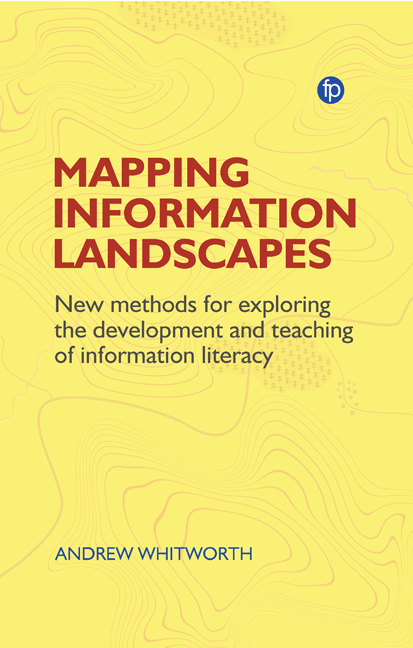 Mapping Information Landscapes
Mapping Information Landscapes Book contents
7 - Conclusion
Published online by Cambridge University Press: 23 July 2020
Summary
Mapping the field of mapping
Growing up in Crowborough (see Chapter 4), the English Lake District felt far away. And in English terms, it is, lying in the opposite corner of the country from Sussex. Yet despite this geographical separation, and before I had ever visited there, the Lake District felt like a familiar place, it having been brought into my life by my parents’ copy of the seven-volume Pictorial Guide to the Lakeland Fells. Even when young I appreciated that these books, written between 1952 and 1965 by Alfred Wainwright, are different from the norm. Rather than being conventionally typeset, the pages are photo-reproductions of a manuscript that, in its entirety – the text, illustrations, maps and the whole layout – Wainwright had hand drawn. This is impressive enough, even before one takes account of the scale and detail of this undertaking. For example, across more than 1,000 pages, all the text is fully justified to both margins without any use of hyphenation. To make the diagrams of mountain ascents most useful, Wainwright altered the perspective as the reader's eye moved up the representation, a technique that is innovative even today (Hutchby, 2012, 26–9). And in addition to his skills as a draughtsman, Wainwright's Guide is exhaustive in terms of its coverage of this area of natural beauty, erudite and possessing a dry wit. Little surprise that the books have become classics of their genre. Those who seek to climb all the fells, or mountains, described in the books are now said to be ‘doing the Wainwrights’.
In both cartographic and discursive terms, Wainwright's Guide is a map of great depth and, thanks to revisions undertaken in the 2000s (by Chris Jesty) for a second edition, still with much relevance to the contemporary walker as a guide for practice. Its classification schema influences this practice, with the chapter titles defining some fells as ‘Wainwrights’ and others as mere supporting players, perhaps less worthy of time and effort as a result. A wide range of emotional reactions are evident in the book (Wainwright does not even try to be an objective chronicler of his pathways and perspectives) and can be provoked simply by reading its pages, let alone following its guidance and immersing oneself in the landscapes it articulates.
- Type
- Chapter
- Information
- Mapping Information LandscapesNew Methods for Exploring the Development and Teaching of Information Literacy, pp. 167 - 176Publisher: FacetPrint publication year: 2020


